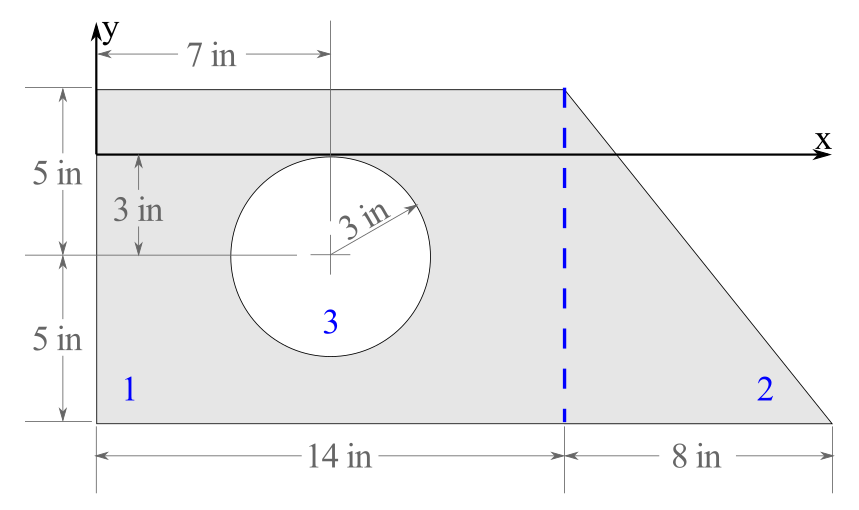Given:
\(b = \inch{1.5}\text{,}\) \(h=\inch{5.5}\text{.}\)
In case 1 the centroids of all three rectangles are on the \(x\) axis, so the parallel axis theorem is unnecessary.
\begin{align*}
(I_x)_1 \amp = \sum_{i= 1}^3 \bar{I} + A d^2\\
\amp = 3 \frac{bh^3}{12}\\
\amp = \frac{(1.5)(5.5)^3}{4}\\
(I_x)_1 \amp = \inch{62.4}^4
\end{align*}
This value is the same as the moment of inertia of a
\((\inch{4.5} \times \inch{5.5})\) rectangle about its centroid.
In case 2, the parallel axis theorem must be used for the upper and lower rectangles, since their centroids are not on the \(x\) axis.
\begin{align*}
(I_x)_2 \amp = \sum_{i = 1}^3 \bar{I} + A d^2\\
\amp = \left( \frac{bh^3}{12} \right) + 2 \left[ \frac{1}{12}hb^3 + (bh) ( h/2 + b/2 )^2 \right]\\
\amp = \frac{(1.5)(5.5)^3 }{12} + 2\left[ \frac{(1.5)^3(5.5)}{12} + (1.5 \times 5.5)(3.5)^2 \right ]\\
\amp = \inch{20.8}^4 + 2 \left[ \inch{1.547}^4 + \inch{101.6}^4 \right ]\\
(I_x)_2 \amp = \inch{226}^4
\end{align*}
\begin{equation*}
(I_x)_2 / (I_x)_1 = 3.61
\end{equation*}
The I-beam is about 3.6 times stiffer than the sandwich beam. This optimization of material usage is the reason we use I-beams.










